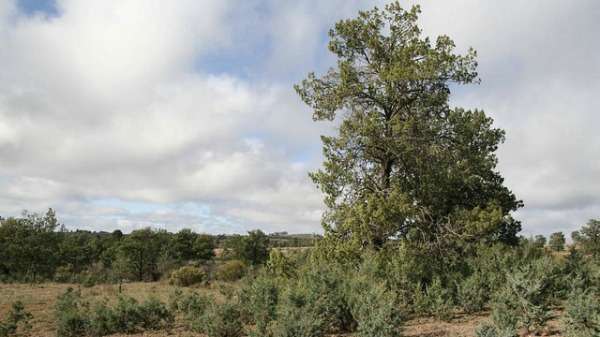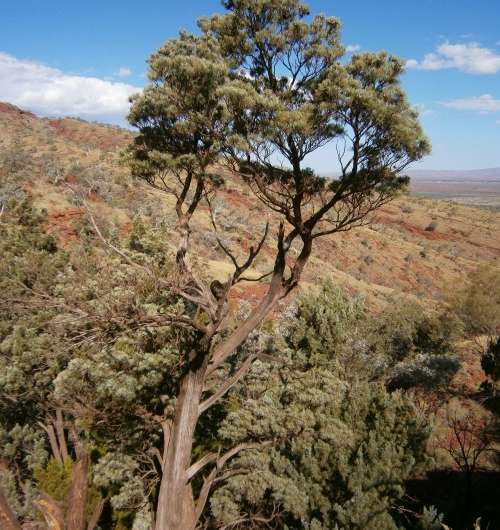Dr O’Donnell’s team analysed the width of growth rings sampled from locally growing native cypress trees (Callitris columellaris). Credit: David Clarke
Wood samples collected from inland Pilbara trees indicate the region recently enjoyed a period of unusually high rainfall, compared to the previous two centuries.
The finding comes as part of efforts to place recent changes to Australia's climate into the broader picture of the past.
The study—led by University of Western Australia researcher Dr Alison O'Donnell—indicates summer-autumn rainfall in the semi-arid Pilbara was unusually frequent and intense from 1995–2012, averaging 310mm compared to an average of just 229mm over the previous two centuries.
"It's not that obvious what the causes of this are," Dr O'Donnell says.
"There are lots of broad-scale circulation patterns influencing rainfall in the region."
One circulation pattern that stands out is the Southern Annular Mode (SAM), a wind belt in the Southern Ocean.
"The SAM has been behaving quite unusually in the last couple of decades as well, coincident with this increase in rainfall," Dr O'Donnell says.
"Other studies have suggested a link between anthropogenic changes and the SAM, and in turn, we've related the SAM to rainfall in north-western Australia.
"They're linked to each other, but we don't entirely understand the mechanism behind it."
Dr O'Donnell's team analysed the width of growth rings sampled from locally growing native cypress trees (Callitris columellaris).
Alison taking samples from a Callitiris. Credit: Gerald Page
"We use a hollow borer to drill into the trunk, and we pull out a little core of wood, about the size of a drinking straw, and in that you can see the bands of tree growth," she says.
The team then cross-matched growth ring data with local Bureau of Meteorology rainfall data, available since the early 1900s.
By correlating growth ring width in a particular year with known rainfall for that year, Dr O'Donnell developed a model that allowed her to estimate summer-autumn rainfall as far back as 1800.
A Callitris tree in the Pilbara. Credit: Alison O'Donnell
"We can now see this unusual period of high rainfall, which is obvious in the record for the last 20 years, is still unusual in the last 200 years," she says.
Dr O'Donnell says her data suggests the recent increase in regional rainfall is also related to a higher frequency and intensity of tropical cyclones in the inland Pilbara.
"Our ongoing research is now focused on expanding our network of tree ring sites in order to better understand the rainfall history of Western Australia," she says.
More information: "Tree Rings Show Recent High Summer-Autumn Precipitation in Northwest Australia Is Unprecedented within the Last Two Centuries." Plos One, DOI: 10.1371/journal.pone.0128533
Journal information: PLoS ONE
Provided by Science Network WA

























